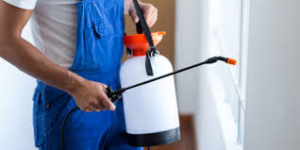Picket Fence Summerville is a traditional style that’s made up of pointed sticks or pales nailed to horizontal stringers between upright posts.

Over time, the white picket fence became a symbol of an idealized vision of middle class family life. Adding this classic style to your property has its own unique benefits.
When you add a picket fence to your property, it enhances the curb appeal of your home. This is a great way to create a welcoming first impression for guests and passersby, and it can lead to increased property value in the long run. Picket fences also offer a sense of continuity that ties together the architectural features of your house and its surroundings. In addition, they can be painted in a variety of colors that complement the exterior design and architecture of your house.
Traditional wood and low-maintenance PVC are two popular material choices for picket fences, and both are attractive in their own right. However, if you want to get the most bang for your buck, we suggest going with vinyl. This material is more durable than wood and resists rot, blistering, peeling, and warping. Plus, it can be made to look like wood, allowing you to enjoy the classic look of a picket fence without the high-maintenance costs.
A well-maintained picket fence offers many benefits to your family and your neighbors. In addition to providing a sense of security, it clearly defines your boundaries and helps keep children and pets safe while creating a pristine environment for outdoor activities. Additionally, a picket fence can help you achieve privacy without blocking out sunlight and a view of your landscaping.
Whether your yard is large or small, adding a picket fence will give it a more finished and organized look. The classic style of a picket fence is ideal for a garden or lawn and can be used to highlight other landscaping elements in your yard, such as flowers, trees, shrubs, and other plants. You can also add a pathway to your front door to create a warm and inviting welcome for visitors.
Before choosing the perfect fence for your home, check with your homeowners association to see if there are any restrictions on materials or heights. Also, be sure to consult with your landscapers and architects to ensure that your new fence fits seamlessly into the existing design of your home.
Adds Privacy
When most people think of a picket fence, they imagine a white, wood-slatted fence that creates a clean, welcoming boundary around a home. These simple, clean lines create a classic look that accentuates the beauty of any yard, adding curb appeal and creating an inviting welcome for guests and neighbors alike. Picket fences also serve a functional purpose by clearly marking property lines without obstructing views from your yard or from the street.
Because picket fences can be tailored to meet a variety of personal preferences and aesthetic concerns, they’re an ideal choice for homeowners who want to add a bit of style to their property while keeping children, pets, and unwanted visitors from entering or exiting the yard. The versatility of these fences makes them an excellent option for a range of architectural aesthetics, including traditional, colonial, and contemporary homes.
In addition to offering a classic, timeless look, picket fences can be customized with a wide range of materials and colors. From the quintessential white that invokes a sense of purity and simplicity to more vibrant hues that make a bold statement, these options allow you to create a fence that’s uniquely your own.
The basic anatomy of a picket fence hasn’t changed much over time, with posts that support the structure and fence panels running between each post. These panels contain rows of evenly spaced wooden slats, held together with rails. The height, width, and design of these slats vary according to the style of the fence, but they typically feature a rounded or scalloped top. While some people may prefer to keep their picket fences a uniform color, others choose to accent them with stain or paint, which can help to bring out the natural beauty of the wood.
Stain is a popular choice for picket fences because it provides a beautiful, organic finish that highlights the unique grain of the wood. The longevity of stain is another benefit, as two coats can last up to 10 years and are easily reapplied when needed. In addition to enhancing the look of your fence, stain also helps to protect it from damage and decay over time.
Keeps Pets and Children in
A picket fence creates a physical barrier that prevents children and pets from leaving the yard, helping to ensure their safety. This can be a lifesaver for families with young children or pets who live near busy roads, wooded areas, or bodies of water where the risk of wandering off the property is high.
A fenced-in yard is also an important selling point for many home buyers. If you are considering adding a fence to your home, a classic wooden picket fence is a timeless and beautiful option that will not only increase curb appeal but will also help keep your family safe and secure.
When it comes to choosing a fence for your home, there are a lot of factors to consider, from privacy and cost to durability and safety. A picket fence is a stylish and affordable choice that can add a great deal of value to your home. It is also a good choice for homeowners who want to keep their pets and children safe without blocking their view of the surrounding landscape.
Picket fences are made from a variety of materials, including wood and vinyl. They can be painted or stained to match the style of your home. Wood picket fences are usually made from cedar, which is naturally resistant to rot and insect damage. However, it will need to be stained and sealed on a regular basis to maintain its appearance and durability. Vinyl is an alternative to wood and offers a similar look but will not need to be repainted or stained.
It is important to choose the right height for a picket fence to keep your pets and children safe. A fence that is too low will not provide a sufficient deterrent and may encourage them to try to jump over it or dig under it. On the other hand, a fence that is too high can be difficult for children and pets to climb or jump over.
A picket fence can also be designed to include gates and other features that can make it more difficult for children and pets to escape. In addition, a gate that can be locked can help prevent unwanted guests from entering your home.
Increases Property Value
A well-built picket fence can do more than simply mark a property’s boundaries. It can also increase the overall value of a home. A traditional white picket fence is often associated with the American dream and evokes images of family-friendly suburban life. These fences can be found in many different styles and materials and are a popular choice for front and back yards. They are typically short and made from evenly-spaced pickets that are attached to rails. If you’re looking for a more stylish look, consider a picket fence with a staggered pattern of alternating shorter and longer pickets.
When it comes to boosting a home’s value, the type of fence you choose is one of the most important factors. The style and design of the fence must align with the architectural style of the house. In addition, the fence must provide a balance between privacy and openness. Lastly, the fence should be constructed with materials that are durable and require low maintenance.
Picket fences are often constructed from wood, but they are also available in less traditional materials like aluminum and vinyl. In addition, some homeowners opt to add wrought iron accents or gate designs to their picket fences to enhance their visual appeal. While a picket fence can be built from scratch, it’s usually more practical to purchase pre-fabricated fencing panels. This way, you can save time and money while still achieving the perfect look for your home.
While there are a variety of ways to boost a home’s value, it’s important to keep in mind that most home improvement projects do not yield a dollar-for-dollar return. Rather, they provide a return on investment that is proportional to the initial cost. This is why it’s essential to make smart choices when it comes to improving your home’s curb appeal, enhancing privacy and security, or adding functionality.
A white picket fence is a classic addition to any yard, and it can be an excellent way to add value to your home. By boosting your home’s curb appeal, increasing privacy and security, and adding functionality, this type of fence can make it easier to sell your home in the future.








